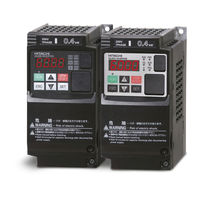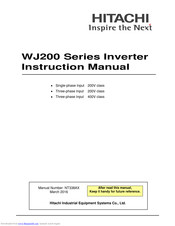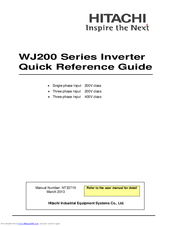User Manuals: Hitachi WJ200-001S Frequency Drive
Manuals and User Guides for Hitachi WJ200-001S Frequency Drive. We have 6 Hitachi WJ200-001S Frequency Drive manuals available for free PDF download: Instruction Manual, Quick Reference Manual
Hitachi WJ200-001S Instruction Manual (421 pages)
WJ200 Series Single-phase Input 200V class Three-phase Input 200V class Three-phase Input 400V class
Table of Contents
Advertisement
Hitachi WJ200-001S Instruction Manual (680 pages)
WJ200 Series Single/Three-phase Inputs 200V/400V class
Table of Contents
Advertisement
Hitachi WJ200-001S Quick Reference Manual (94 pages)
WJ200 Series Inverter Single-phase Input 200V class Three-phase Input 200V class Three-phase Input 400V class
Table of Contents
Hitachi WJ200-001S Quick Reference Manual (95 pages)
WJ200 Series Inverter Single-phase Input 200V class Three-phase Input 200V class Three-phase Input 400V class
Table of Contents
Advertisement





